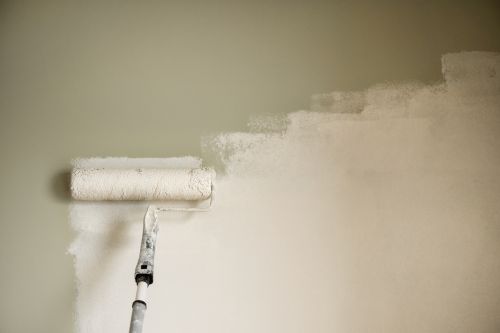Refurbishing a wall with a new colour can completely transform the ambience of a space. However, painting over an already painted wall requires following certain key steps to achieve an impeccable and long-lasting finish. In this guide, we will explain how to do it professionally, following the recommendations of the painting experts at Bartolomé Bas Pinturas.
Preparations before starting
Assess the state of the wall
Before painting, it is essential to examine the wall to identify possible problems such as cracks, damp stains or peeling paint. A damaged surface can affect the final result. If you find dampness, the experts at Bartolomé Bas Pinturas suggest treating it with specific products to avoid future problems.
Choosing the right colour
The colour you choose will define the character of the room. Consider factors such as lighting, the size of the space and the atmosphere you want to create. For example, lighter tones tend to visually enlarge spaces, while darker tones add sophistication. If you are unsure, Bartolomé Bas offers personalised advice to help you make the best decision.
Gathering the necessary materials
To paint efficiently, you will need tools such as brushes, rollers, paint trays, masking tape, protective plastics and, of course, the high-quality paint that best suits your project.
Contact our professionals
Preparation of the wall for repainting
Cleaning the surface
It is essential to clean the wall before starting. Use a damp cloth to remove dust and dirt. If there are grease stains, use a mild degreaser. A clean wall ensures better paint adhesion.
Repairing cracks and flaws
If the wall has cracks, holes or irregularities, repair them with putty or special wall paste. Once dry, sand the surface lightly to even it out. This step is key to achieving a professional finish.
Applying primer
Priming is especially important if you are painting over dark or vibrant colours. It helps to cover the previous colour and improve the adhesion of the new paint, reducing the number of coats needed.
Techniques for painting over an existing colour
Choosing the right paint
Selecting the right paint is crucial. If the original wall has oil-based paint, you will need a coat of primer before applying water-based paint. In addition, eco-friendly and anti-bacterial paints, such as those used by Bartholomew Bas, are an excellent choice to ensure durability and environmental health.
Application methods
Use a roller for large areas and brushes for edges and corners. Apply the paint in uniform movements, avoiding overloading the roller to avoid drips. Work in small sections to maintain proper control.
Layers needed
Generally, two coats of paint are sufficient to cover the previous colour. However, in cases of very dark colours, a third coat may be necessary. Be sure to let each coat dry completely before applying the next coat.
Common mistakes when painting over a previous colour
Failing to properly prepare the wall
Omitting to clean or repair the wall can result in an uneven surface and paint that does not adhere properly.
Using low-quality paint
Opting for cheap paint may seem like a good idea at first, but often results in a poor finish and reduced durability.
Skipping drying time
Patience is key. Missing drying times between coats can cause staining, cracking or uneven texture.
Tips for keeping paint in perfect condition
How to clean and maintain freshly painted walls
Clean walls with a soft cloth and specific products for washable paint. Avoid abrasive products that may damage the surface.
Prolonging the durability of the paintwork
Avoid hanging pictures or shelves immediately after painting. Give the paint time to cure completely and make sure to keep the room well ventilated.
Other publications that may interest you
How to prepare a house for painting without causing chaos and staining
Proper preparation saves time, avoids splashes and allows paint to adhere better. Follow this plan - tested by Bartolomé Bas's team of house painters - and you will achieve an impeccable finish without turning your home into a war zone.Clear and organise the room...
Exterior floor paint: what type to use and how to apply it correctly
Protecting an exterior floor - terrace, porch, garage or pedestrian access - is not just about aesthetics: it prevents cracks, leaks and premature wear and tear. Choosing the right exterior floor paint and applying it methodically ensures a durable and...
How to know if the humidity in your house is due to condensation, filtration or capillarity
The stain you see on the wall does not always have the same origin, and making a mistake when it comes to treating it can make the problem worse and make the repair more expensive. Below you will learn how to differentiate the three most frequent sources of damp and...




